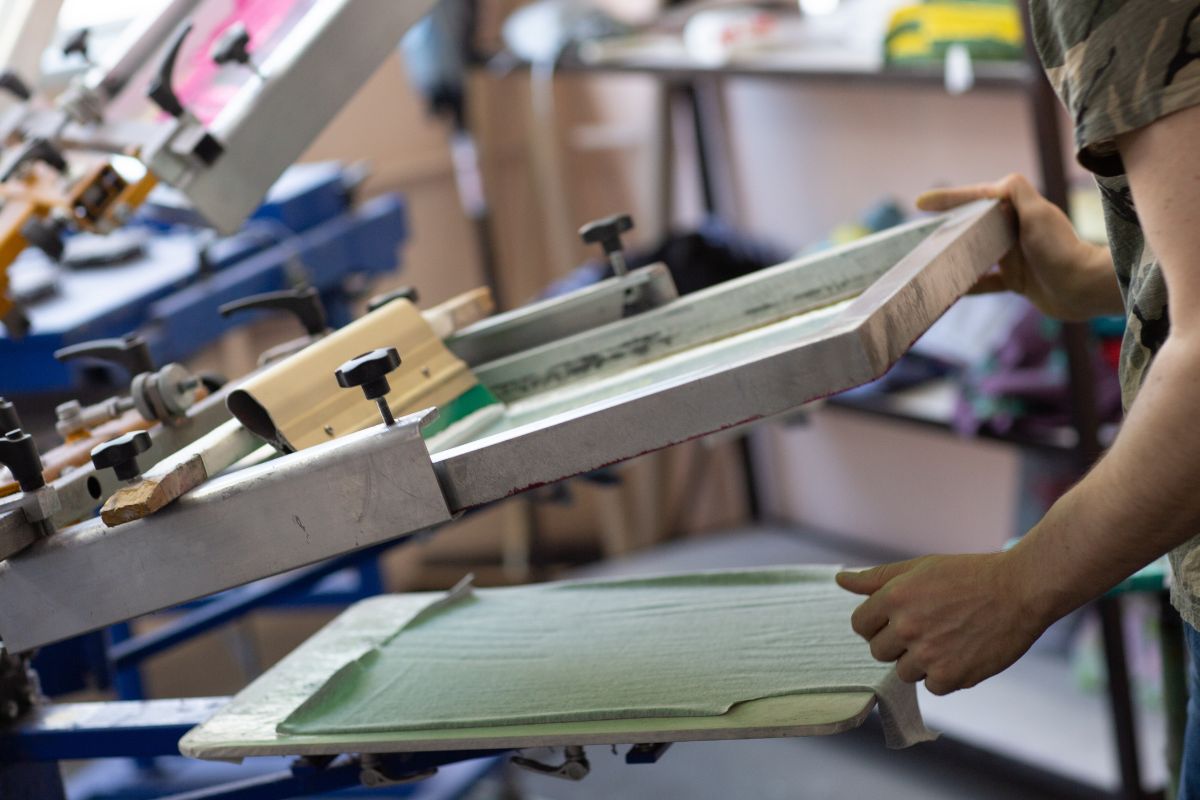In the pursuit of launching a successful print on demand business, selecting the right niche is paramount. Many entrepreneurs find themselves adrift in an ocean of graphics and designs, unsure of where to anchor their stock.
This comprehensive guide dives into how to identify profitable niches through thorough market research and align them with your passions to ensure your offerings resonate in a crowded marketplace.
Navigating Print on Demand: Contents Overview
- Selecting Print on Demand Niches with High Profit Potential
- Uncover Profitable Niches Through Market Research
- Align Your Passions With Your Print on Demand Niche
- Assess Competition to Find a Sustainable Niche
- Evaluate Profit Potential of Your Chosen Niches
- Test Niche Ideas Before Full-Scale Implementation
- Adapt and Evolve Your Niche Strategy Over Time
- Conclusion
Readers will learn to assess competition effectively and evaluate the profit potential of their chosen niches. For those looking to refine their strategy, this article also provides insights on testing your niche ideas and the importance of evolving your approach as market dynamics shift.
With practical tips on navigating the print on demand model, the content addresses the often daunting challenge of differentiation, promising to equip readers with the knowledge needed to make informed decisions and cultivate a unique and lucrative offering in the realm of custom gifts and merchandise.
Selecting Print on Demand Niches with High Profit Potential
| Niche | Description | Profit Potential |
|---|
| Pet Lovers | Designs featuring pets or humorous pet-themed quotes, appealing to passionate pet owners. | High due to strong emotional appeal and loyal customer base. |
| Fitness and Wellness | Apparel and accessories targeting gym-goers, yogis, and fitness enthusiasts with motivational slogans. | High as people are willing to invest in their fitness lifestyle. |
| Hobbies and Interests | Niche designs related to hobbies like gaming, gardening, cooking, or hiking, attracting specific audiences. | Moderate to high, depending on the popularity of the hobby. |
| Family and Relationships | Products celebrating family roles (e.g., “Best Dad” shirts) or unique gifts for couples. | High as people often buy gifts for special occasions. |
| Career and Professions | Niche designs tailored for specific careers like nurses, teachers, engineers, or firefighters. | High due to strong identity and pride associated with professions. |
| Pop Culture and Trends | Designs inspired by current events, memes, or trending topics that quickly gain popularity. | High but short-term; requires quick turnaround to capitalize on trends. |
| Spiritual and Religious | Inspirational quotes, Bible verses, or spiritual symbols appealing to faith-based customers. | High as it caters to a loyal and engaged audience. |
| Travel and Adventure | Products for travelers, featuring maps, famous landmarks, or travel-themed quotes. | Moderate to high, appealing to the growing travel community. |
| Eco-Friendly and Sustainability | Designs promoting green living, recycling, and sustainability, catering to environmentally conscious consumers. | High as this market is growing with increasing awareness of eco-friendly practices. |
| Humor and Sarcasm | Funny quotes or sarcastic designs that appeal to people with a sense of humor, great for casual wear. | High, as humorous designs often have broad appeal. |
Uncover Profitable Niches Through Market Research
Initiating a successful print on demand venture requires astute market analysis to identify products that consumers are actively seeking. By employing tools such as Google Trends, entrepreneurs can assess evolving market preferences and pinpoint profitable opportunities, especially in humor-centric merchandise popular on platforms like Redbubble.
Simultaneously, exploring underserved market spaces may reveal gaps ripe for a distinct brand’s entry. This exploration can harness the advances in technology to cater to niche demands, setting the stage for the specialized content that will follow.
Analyze Market Trends to Find High-Demand Products
In the dynamic realm of print on demand, success hinges on pinpointing high-demand products through meticulous market trend analysis. Utilizing robust data sets from search engines and e-commerce platforms, businesses can track burgeoning trends, such as products advocating for feminism, and cater to the burgeoning niche market.
This strategic approach positions entrepreneurs to quickly capitalize on rising demands, giving them a competitive edge in the evolving educational and advocacy-focused arenas.
The practice of brainstorming coupled with quantitative tactics allows for the identification of items within the educational sector that may serve as potent vehicles for messages of empowerment and equality.
Through the meticulous examination of search frequency and purchase patterns, a print on demand company can discern that educators and activists are actively seeking tools that underscore feminist ideologies, thereby revealing a lucrative niche market that responds to social consciousness.

Identify Underserved Markets for Unique Opportunities
In the pursuit of unique opportunities, a print on demand company should consider underserved markets where particular interests converge, such as the skateboarding culture. By integrating insights from avid skateboarding communities with cutting-edge graphic design, businesses can fulfill an unmet demand for customized apparel and accessories.
This approach not only taps into a passionate customer base but also reflects the rich graphical and cultural heritage of skateboarding, ensuring products resonate deeply with their intended audience.
For professionals in virtually every field, from graphic design to healthcare, niche-specific demand presents a fertile ground for print on demand services.
By leveraging profession-specific insights, such as the use of industry jargon or iconic symbols, businesses can create specialized product lines that speak directly to the nuances of a particular culture or profession.
This strategy not only distinguishes a brand from competitors but also establishes a direct connection with consumers by recognizing and celebrating their professional identity.
Align Your Passions With Your Print on Demand Niche

Selecting a niche that aligns with personal interests such as art, music, veganism, sportswear, or space exploration can lead to a more authentic and fulfilling print on demand business. Individuals can channel their own passions into creating unique, relatable products by utilizing their personal expertise and enthusiasm.
This subsection explores how one’s fervor for specific hobbies can be the driving force behind developing product lines that resonate with like-minded consumers, further carving out a profitable niche in the competitive market.
Choose a Niche Based on Your Interests and Hobbies
When choosing a niche for a print on demand business, it is often advantageous for entrepreneurs to consider their personal hobbies and interests.
For instance, a passion for environmental conservation could inspire the creation of a tote bag collection with eco-friendly messages, tapping into a shared sentiment that is particularly resonant around holidays like Christmas when sustainable gifting becomes a focal point in the United States.
By aligning a product line with personal interests, the marketing strategy benefits from authenticity, making the connection to the target audience feel more organic and compelling.
Incorporating interests into a print on demand business can also leverage the vast expanse of niches available on the internet. A music enthusiast might produce a series of custom guitar prints on clothing, while a space exploration aficionado could design a line of astronomy-themed phone cases.
The key is to integrate these interests seamlessly into a broader marketing strategy that connects with consumers on a personal level, especially during strategic seasons such as Christmas when themed products tend to see a spike in demand:
- Assess personal interests and evaluate their market potential.
- Consider seasonal occasions like Christmas for themed product launches.
- Align product designs with trends and consumer interests in the United States.
- Develop an authentic marketing strategy that resonates with target audiences.
Utilize Personal Expertise to Create Relatable Products
Integrating personal expertise into product design is a potent strategy for bolstering sales within the print on demand ecosystem. Whether one’s knowledge stems from a career in sport, familiarity with specialized information, or proficiency in software development, leveraging this skillset can enable the creation of uniquely appealing merchandise.
For instance, a fitness coach with an insightful understanding of athlete needs might design training apparel with motivational quotes, thus forging a genuine connection with fellow sport enthusiasts.
Moreover, the utilization of personal expertise supports the establishment of a print on demand brand as an information authority in its niche market. A software engineer’s in-depth understanding of programming languages could translate into cleverly designed merchandise that appeals to the tech community, combining humor and practicality.
In doing so, customers receive value not only from the product itself but also from the shared knowledge and experience that the merchandise reflects, thereby enhancing the overall sales proposition.
Assess Competition to Find a Sustainable Niche
| Sustainable Niche | Description | Why It’s Sustainable | Example Products |
|---|---|---|---|
| Eco-Friendly Apparel | Clothing made from organic, recycled, or sustainable fabrics. | Focuses on using eco-friendly materials and ethical production methods. | Organic t-shirts, recycled hoodies, eco-friendly socks |
| Vegan & Cruelty-Free Products | Products that do not involve animal products or testing. | Responds to the growing demand for cruelty-free, ethical items. | Vegan leather bags, animal-free graphic tees |
| Zero Waste Lifestyle | Products designed to reduce waste in daily life (e.g., reusable items). | Encourages sustainability by promoting zero-waste practices. | Reusable coffee cups, tote bags, bamboo toothbrushes |
| Renewable Energy & Climate Change Awareness | Merchandise promoting clean energy and environmental awareness. | Supports the promotion of green energy and raising awareness of climate change. | Solar-powered gadgets, eco-themed t-shirts, climate change posters |
| Plant-Based Products | Items made from plant-based or biodegradable materials. | Supports a sustainable, plant-powered lifestyle. | Bamboo shirts, plant-based accessories, biodegradable phone cases |
| Upcycled & Repurposed Products | Clothing or accessories made from repurposed materials. | Reduces waste by reusing existing products and materials. | Upcycled denim jackets, repurposed fabric bags |
| Fair Trade & Ethical Fashion | Fashion made by artisans under fair labor conditions, promoting ethical trade. | Focuses on fair wages and ethical labor conditions for workers, ensuring ethical production. | Fair-trade scarves, ethically made jewelry |
| Eco-Friendly Home Decor | Sustainable and eco-conscious home decor items made from natural or recycled materials. | Encourages the use of sustainable materials in home decoration. | Recycled wood wall art, organic cotton cushions |
| Sustainable Outdoor Gear | Gear for outdoor activities made from sustainable, durable materials (e.g., backpacks, jackets). | Appeals to eco-conscious adventurers and those who care about reducing their environmental footprint. | Recycled backpacks, eco-friendly camping gear |
| Conscious Beauty & Self-Care | Personal care items such as skincare, body care, or bath products made from natural, sustainable ingredients. | Focuses on eco-friendly packaging and natural ingredients, promoting healthier self-care routines. | Organic skincare sets, natural soaps, bamboo brushes |
Within the dynamic realm of print on demand, understanding the competitive landscape is essential for carving out a sustainable niche. An in-depth analysis of competitors sheds light on market saturation, informing strategies to distinguish one’s offerings.
Through meticulous market segmentation and astute pricing strategies, businesses can position themselves attractively to the target audience in the United Kingdom and beyond. This section will provide valuable insights on evaluating competition to ensure a product line not only thrives but resonates effectively with consumers.
Research Competitors to Understand Market Saturation
Conducting thorough research on competitors is a cornerstone of a robust business model, particularly in print on demand, where understanding market saturation is critical.
Knowledge derived from such analytics can highlight oversaturated niches, enabling businesses to avoid areas where ‘too many fish are already in the pond.’ By identifying these densely populated markets, companies can redirect efforts towards less crowded spaces where unique print on demand offerings can thrive.
To bolster strategic decision-making, businesses must employ artificial intelligence and advanced analytics when examining the competitive landscape. These tools can offer insights into market trends, pinpointing where competitors may be overextending.
Armed with this knowledge, a print on demand enterprise can craft a more nuanced business model that targets underrepresented niches with higher potential for long-term success and sustainability:
- Utilize AI analytics to assess competitor density in various print on demand niches.
- Identify gaps in the market to avoid high saturation and enhance the uniqueness of product offerings.
- Incorporate learnings into business strategy to target under-served areas effectively.
Find Ways to Differentiate Your Products From Others
To carve a distinct place in the competitive print on demand realm, companies must innovate their merchandising strategies to stand out. For instance, incorporating astrology into product designs offers a personalized touch that resonates with consumers, tapping into the human desire for connection with the cosmos.
By presenting a unique retail experience that intertwines celestial themes with quality consumer goods, a print on demand business can distinguish itself, attracting those who seek to express individuality through their purchases.
Furthermore, integrating health and wellness trends into a print on demand strategy can create a compelling differentiation in a saturated market.
By offering products that not only look good but also promote a healthy lifestyle, such as yoga mats with customized designs or water bottles featuring inspirational wellness quotes, businesses highlight their commitment to the consumer’s overall well-being. This approach not only meets customers’ aesthetic desires but also supports their health-conscious values, thereby enhancing brand loyalty in the retail space.
Evaluate Profit Potential of Your Chosen Niches
Assessing the viability of a chosen niche in print on demand is critical. A firm must calculate costs and anticipate potential revenues when considering the creation of shirts, clothing, and other items catering to niches like environmentalism.
It’s imperative to ascertain price points and gauge the willingness of potential customers to pay for these products. The forthcoming analysis will provide practical insights on optimizing profitability by aligning product offerings with market demands and consumer expectations.
Calculate Costs and Potential Revenues for Viability
Thorough research into the print on demand market is imperative for estimating viability, particularly when considering the launch of yoga-themed merchandise.
By analyzing core expenses such as production costs, shipping fees, and platform charges, businesses can develop pricing strategies that reflect market value and consumer willingness to pay. Meticulous cost calculation enables a firm to anticipate potential revenues, distinguishing sustainable niches from fleeting trends, especially during key seasons such as holiday sales periods.
Monitoring inventory demand allows a print on demand business to align its offerings with consumer needs, avoiding the pitfalls of overstocking or missed sales opportunities.
In the context of affiliate marketing, measuring conversion rates and commission structures plays a critical role in understanding the relationship between promotional expenses and income. Evaluating these financial aspects with precision ensures that a print on demand niche, such as holiday-themed apparel, stands on solid ground for profitability.
Consider Price Points and Customer Willingness to Pay
Understanding customer behavior is key when determining price points for print on demand products. One must gauge how much customers are willing to pay, particularly for items that resonate with their hobbies or interests. A careful evaluation of the competition and strategic pricing can capture attention and improve sales, without compromising profit margins.
Effective advertising can enhance perceived value, influencing customer willingness to pay for print on demand niches. Businesses must consider balancing advertising expenses with product pricing, aiming to attract demand while maintaining a profitable operation. Attention to these details aids in achieving a competitive edge in the marketplace:
| Niche | Customer Interest | Competition Level | Ad Spend | Price Point |
|---|---|---|---|---|
| Hobby-Based Apparel | High | Moderate | Low | Medium |
| Eco-Friendly Accessories | Moderate | High | Medium | High |
| Personalized Home Decor | High | Low | High | Premium |
Test Niche Ideas Before Full-Scale Implementation

Before committing to full-scale production, it is prudent for print on demand businesses to test niche ideas. Creating sample products and presenting them on a dedicated landing page allows for the measurement of customer interest.
Collecting and analyzing feedback helps in refining niche offerings, leading to an improved catalog. Crucially, this process aids in circumventing potential legal issues such as intellectual property disputes and copyright infringement, ensuring a business’s custom offerings do not infringe on existing trademarks, a common issue on platforms like Teespring.
Create Sample Products to Gauge Customer Interest
Within the realm of entrepreneurship, validating a product’s appeal before investing in mass production is a critical step. A print on demand business may create a limited run of mugs with specific designs to offer to their target market. This approach, when paired with strategic digital marketing efforts, acts as a valuable tool in gauging consumer response and demand, informing future inventory decisions.
Before diving into a new print on demand niche, entrepreneurs must test the waters with sample products. Crafting a small collection of items allows for direct feedback from potential customers and a practical assessment of market fit. Real-world interactions with the sample merchandise can offer actionable insights that can refine marketing strategies and product adjustments, ensuring resources are invested wisely and align with customer preferences:
- Launch a pilot campaign featuring sample mugs to a specific target market segment.
- Analyze feedback and engagement metrics from digital marketing channels.
- Adjust product design and marketing strategies based on consumer insights.
Use Feedback to Refine and Improve Your Niche Offerings
Leveraging customer feedback is crucial for honing a brand’s offerings in the print on demand space. When creativity intersects with demand, such as with unique pet-themed apparel or symbol-laden birthday gifts, consumer insights can guide product refinement, ensuring each design resonates with prospective buyers. Entrepreneurs must actively seek and incorporate this feedback, using it as a compass to steer their catalog towards items that capture the zeitgeist and meet specific consumer desires.
A print on demand company can elevate its niche offerings by aligning closely with the pulse of customer demand. For example, if feedback suggests a high interest in personalized pet portraits on canvas, this insight paves the way for the brand to craft an improved product line that celebrates the bond between owners and their pets.
Such responsiveness not only demonstrates a commitment to satisfying customer needs but also solidifies the brand’s reputation for attentive service and product excellence.
Adapt and Evolve Your Niche Strategy Over Time

In the ever-changing landscape of print on demand niches, businesses must keep a vigilant eye on industry trends to maintain relevance and drive revenue. A commitment to adjusting the focus based on performance metrics can uphold profit margins and ensure continuing profit in sectors like interior design. Subsequent discussions will offer strategic insights on how to monitor shifts in consumer preferences and how to refine niche selections dynamically for sustained success.
Monitor Industry Trends to Stay Relevant and Competitive
Staying abreast of industry trends is pivotal for print on demand businesses aiming to remain competitive. The ever-shifting patterns of popular culture and fashion dictate which posters, gear, and community-driven merchandise rise to prominence.
By closely monitoring these trends, companies can adeptly adjust their product offerings, ensuring they are always aligned with the latest consumer interests and demands.
Engagement with the audience’s preferences allows businesses to not only keep their finger on the pulse of what’s current but also anticipate the next wave of popular items.
A proactive approach, where a print on demand firm regularly incorporates fresh fashion elements into their gear, can contribute to sustaining relevance in a highly competitive market. Such vigilance fosters strong ties with the community, keeping the brand top-of-mind for consumers:
| Trend Category | Popular Culture | Fashion | Community | Profit Potential |
|---|---|---|---|---|
| Current Interest | Meme-Inspired Posters | Minimalist Design Gear | Local Artist Collaborations | High |
| Emerging Trend | Augmented Reality Posters | Eco-Conscious Apparel | Virtual Community Events | Medium to High |
Adjust Your Focus Based on Performance Metrics
In the print on demand industry, adjusting one’s focus based on performance metrics can significantly boost productivity. For instance, if data indicates that items with gamer-oriented designs are seeing a surge in sales, it may be time for businesses to refresh their inventory with similar themes. This shift in focus ensures that the most popular products remain in the spotlight, catering to the evolving demands of the targeted consumer base.
Additionally, frequently reviewing performance metrics can uncover unexpected trends, such as a growing interest in products featuring astral designs or constellations. This observation might inspire a print on demand company to develop a specialized line of goods that captures the mystique of the night sky, appealing directly to stargazing enthusiasts and adding a celestial touch to their collection:
| Category | Trending Items | Action Taken |
|---|---|---|
| Gaming | Gamer-specific apparel | Introduced new designs |
| Astronomy | Constellation-themed products | Expanded product line |
Conclusion
Choosing a fitting niche within the print on demand market is instrumental to achieving long-term success and distinguishing your offerings from competitors. By conducting thorough market research, aligning products with personal passions, and assessing potential profitability, entrepreneurs can create compelling, relatable merchandise that resonates with target audiences.
Regularly testing and refining niche selections based on customer feedback and industry trends ensures a brand remains relevant and profitable. The strategic approach to niche selection not only connects deeply with consumers but also positions a print on demand business as an authority in its chosen market segment.



